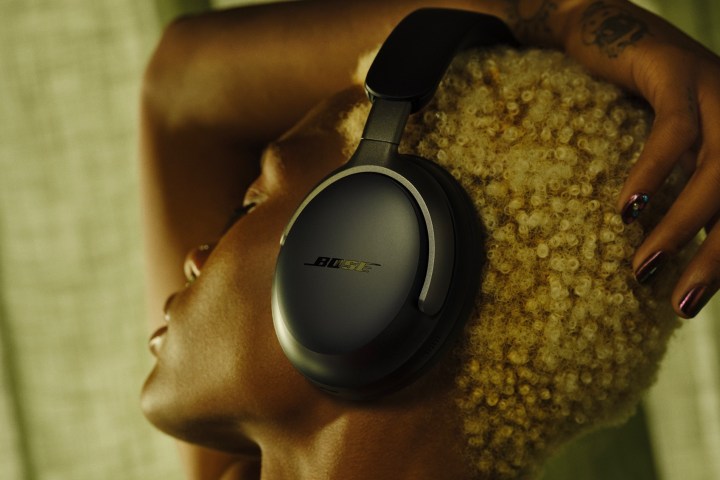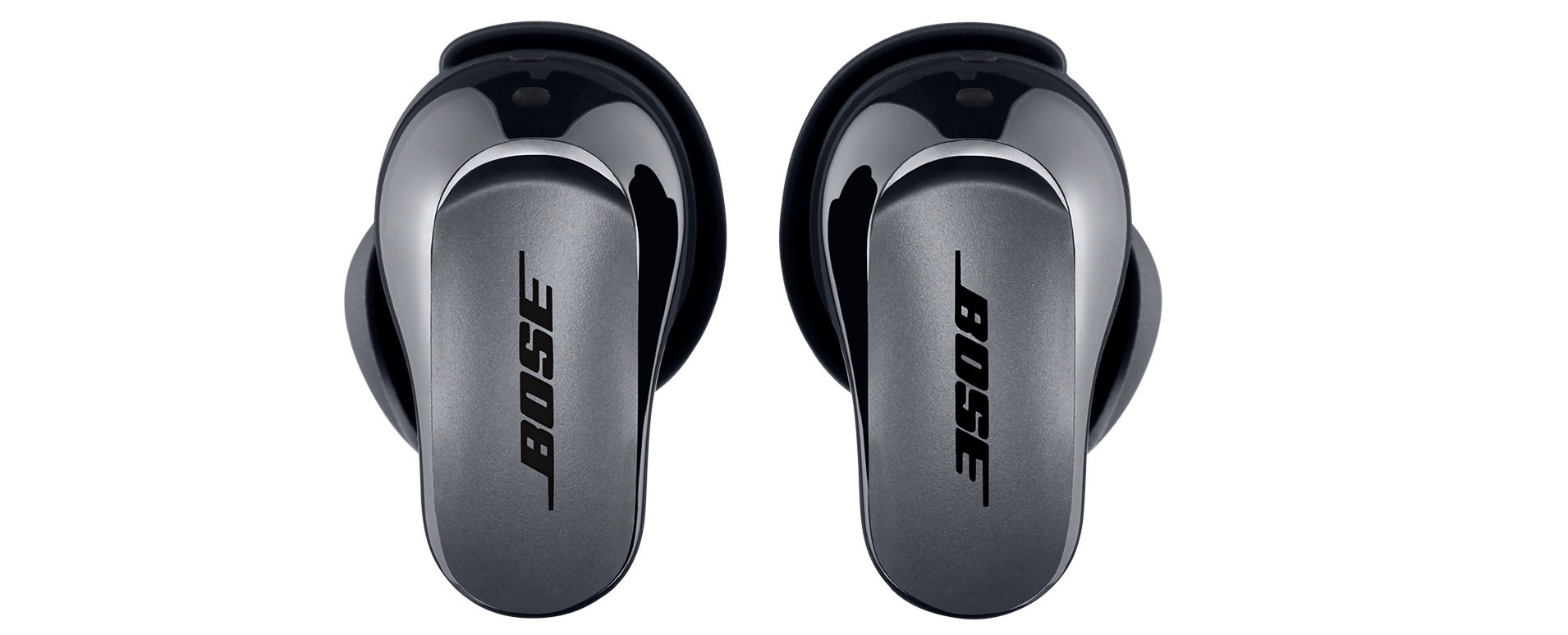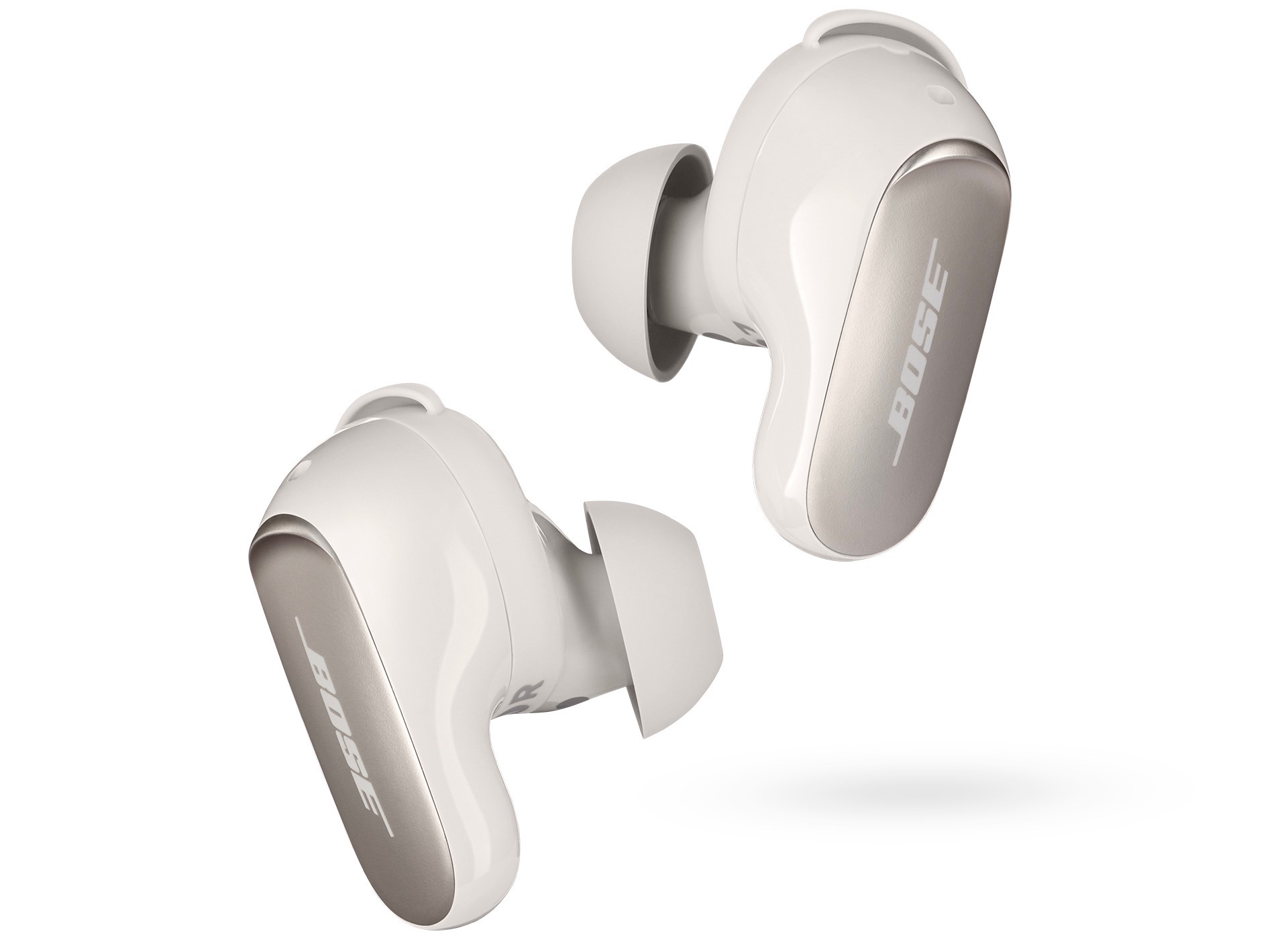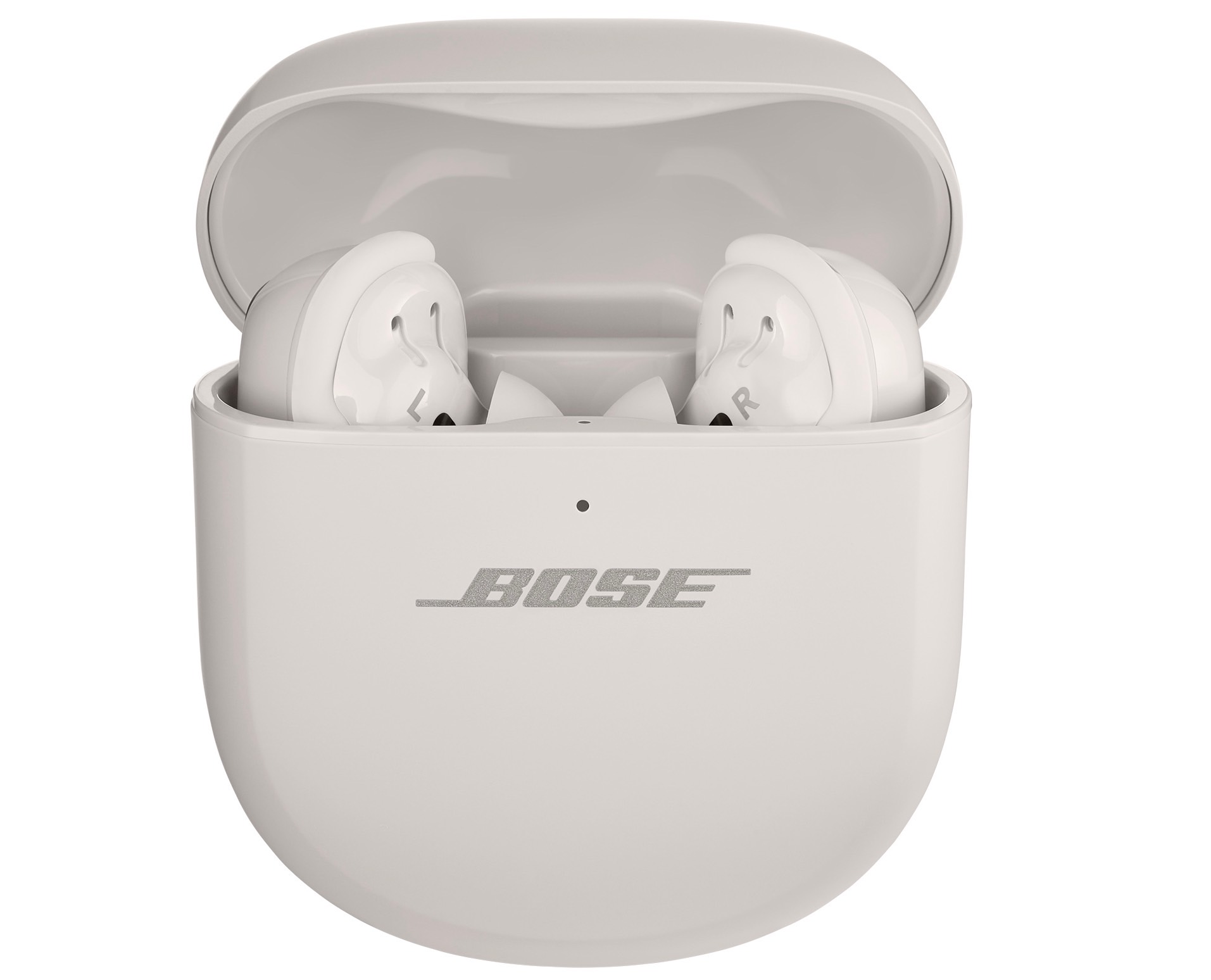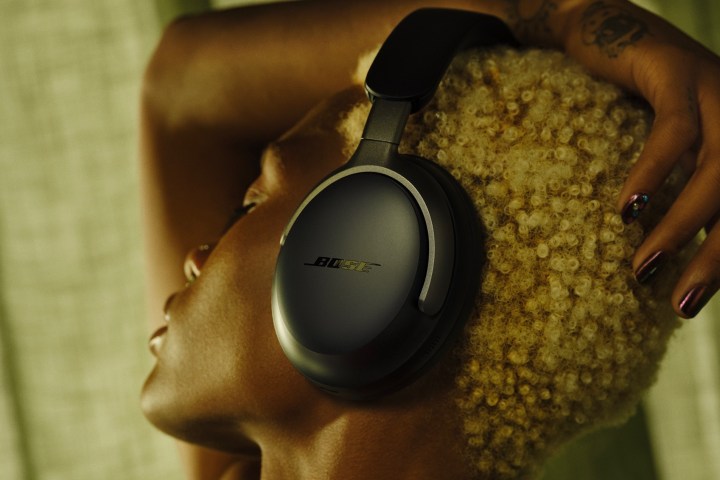
Bose has debuted its latest QuietComfort wireless headphones and earbuds — the Bose QuietComfort Ultra Headphones ($429) and Bose QuietComfort Ultra Earbuds ($299). They feature new designs, new materials, and in keeping with the industry’s recent obsession with spatial audio, the new models are equipped with Bose Immersive Audio, Bose’s version of the 3D audio experience that Apple helped to popularize with its AirPods Pro. The Ultra models also have Qualcomm’s Snapdragon Sound platform, which enables hi-res or lossless CD-quality audio via the aptX Adaptive Bluetooth codec when used with compatible Android smartphones.
The new Ultra models replace the Bose Noise Cancelling Headphones 700 and the Bose QuietComfort Earbuds II (QCE II) as the company’s wireless audio flagships. Bose has also introduced a successor to the Bose QuietComfort 45 Headphones, known simply as the Bose QuietComfort Headphones ($349). All three models will be available in black or white, with an additional limited-edition green color for the QuietComfort Headphones. The Ultra models start shipping in October, with the QuietComfort Headphones arriving a little earlier, on September 21. Preorders for all three models start September 14 on bose.com.
Bose Immersive Audio
Bose says its immersive audio system creates a wider, more spacious soundstage for all kinds of content. And similar to the Dolby Audio spatial option on the recently released Jabra Elite 10 wireless earbuds, Bose’s system uses sensors to enable optional head tracking.
Bose calls the head-tracked mode of immersive audio “still” — as in, when you’re not moving around, the head tracking locks the music in space, giving you a greater sense of realism. “Motion,” on the other hand, keeps the improved soundstage of spatial audio, but disables head tracking for when you’re moving around — head-tracked spatial audio can be a bit disorienting when you’re not sitting still.
Bose’s version of spatial audio is a bit more conservative than some other approaches. I’m told that the goal is to recreate the experience of sitting in the sweet spot between two stereo speakers that are in front of your listening position. I attended a demo of the new system in Brooklyn, N.Y., and it definitely matches that description.
Hi-res, lossless, and LE Audio
Bose’s use of the Snapdragon Sound platform will support aptX Lossless, for a true rendition of CD-quality 16-bit/44.1 kHz sound, however its aptX Adaptive implementation of hi-res audio will be limited to 24-bit/48kHz.
In 2022, Bose said that it would add Snapdragon Sound to the QCE II in 2023, however company spokespeople told me that this is now looking unlikely. The expectation is that those who value hi-res and lossless audio will buy the Ultra Earbuds instead.
Bose also told me that its Ultra products have the hardware to support Bluetooth LE Audio, including the Auracast broadcast feature, but that these features won’t be turned on in products’ software until there is wider support for LE Audio among smartphones and other devices.
Bose QuietComfort Ultra Headphones

The first thing you notice about Bose’s new flagship noise-canceling headphones (other than its much simplified name) is their design. They look like a hybrid of the now-discontinued Noise Cancelling Headphones 700 and the QuietComfort 45 — Bose has kept the slender profile of the 700, but returned to a traditional forked earcup pivot. Bose fans will also take note that the Ultra is able to fold up and fold flat — many folks were annoyed by the 700’s fold flat-only design, which takes up more room in a bag.
The headband is now a little wider and the sliders and earcup pivots have been built using aluminum instead of plastic. Bose tells me that choice was more about providing a high-end, luxurious feel for the Ultra, and less about concerns around durability.
It seems the 700’s design wasn’t the only aspect of those headphones Bose felt needed a rethink. The Ultra Headphones almost entirely abandon the 700’s touch controls. These have been replaced by a single multifunction button for calling and playback control and a raised, capacitive strip for volume control. A long-press on the volume strip acts as a customizable gesture that can be used to activate a voice assistant or switch immersive audio modes. A combo power/Bluetooth pairing button covers the remaining functions, and Bose has kept the 2.5mm analog input for wired audio connections.
The Ultra Headphones now have wear sensors — something the 700 notably lacked when they debuted — and these can be used to auto-pause and resume music when you remove and replace the headphones. Bose says the cans will also enter into a hibernation mode 15 minutes after the Ultra have been removed if they aren’t put back on, which gets rid of the need to power them down manually.
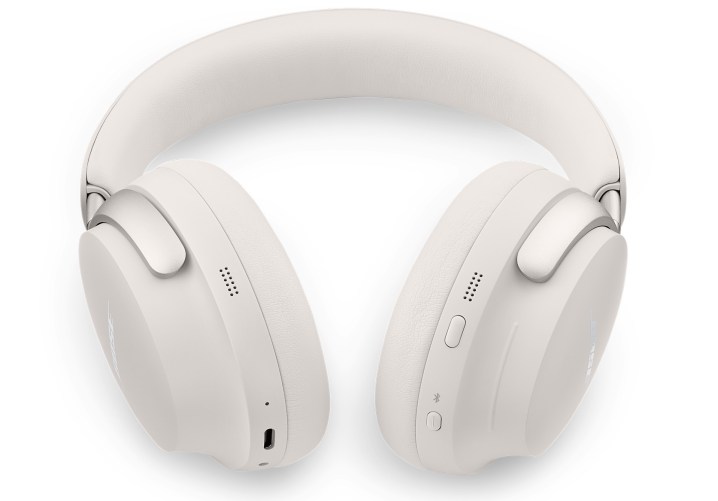
Inside, the Bose says the Ultra have received a slew of improvements, including better active noise cancellation (ANC) and the addition of Active Sense — a feature Bose debuted on the QCE II that monitors your environment for loud sounds when you’re in transparency mode and switches to ANC when it detects dangerous decibel levels.
The Ultra also inherit another QCE II feature: CustomTune, which automatically calibrates the headphones to your ears’ specific shape and responsiveness. Bose says this improves both overall sound quality, as well as the effectiveness of ANC.
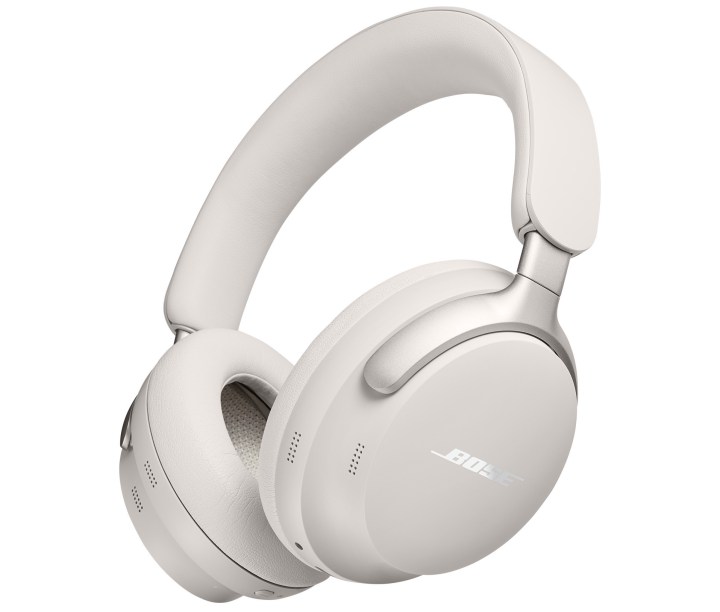
Bose claims that call quality is another area where the Ultra improve over their predecessors. The new cans use new mics arranged in a beamforming array that reportedly can differentiate your voice from any unwanted sound in a 360-degree pattern.
Even battery life has been moderately improved. The Ultra will apparently get 24 hours of playtime (versus 20 for the Noise Cancelling 700), unless you engage Bose Immersive Audio, in which case, it drops to just 18 hours.
The one thing that didn’t survive the transition to the Ultra model was Bose’s support for Amazon Alexa and Google Assistant. The new headphones still let you work with a voice assistant, but only the one that’s natively built into your phone.
Bose QuietComfort Ultra Earbuds
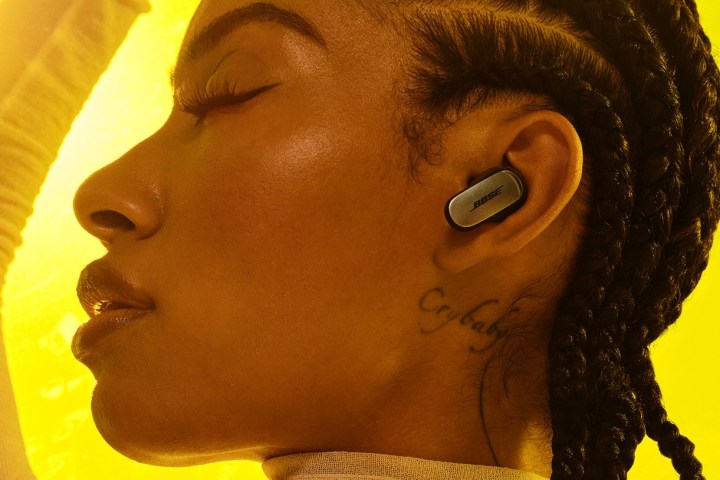
The Bose QuietComfort Ultra Earbuds look nearly identical to their predecessors, but Bose says they now incorporate a metallic treatment for a more upscale look. The stability bands have also been slightly redesigned to ensure they grip the earbuds in the right spot for comfort.
On the technology side, ANC and sound quality remain unchanged (except for the new addition of Bose Immersive Audio), but the company says it has made changes to the mic setup to improve voice pickup. The mics aren’t more wind-resistant per se, but Bose has adjusted the algorithm to determine which mic is experiencing the least amount of wind noise in order to prioritize that earbud when it’s noisy outside.
Maximum battery life is unchanged at six hours per charge, but Bose notes that using its Immersive Audio function will drop that number to just four hours.
Wireless charging was a notably absent feature on the QCE II, but Bose appears to have come up with a solution to add wireless charging to both the QCE II and the new Ultra Earbuds — but as an optional upgrade. You can buy a $49 silicone case cover that fits over the charging case for both models and will enable wireless charging. That seems like a lot of money to add a feature that can be found in earbuds that cost less than $100, but at least the option exists.
Unfortunately, at launch, the Ultra Earbuds will still lack Bluetooth Multipoint. The reason, according to Bose, has to do with the complexity of the components that Bose has chosen — a combination of different chipsets from different manufacturers that make it hard to introduce features like multipoint. However, I was told that the company intends on bringing the feature to the Ultra Earbuds — I just wasn’t given a firm answer on when that’s expected to happen.
Bose QuietComfort Headphones
The Bose QuietComfort Headphones are the least changed model of the new lineup. They’re effectively a rebrand of the QuietComfort 45, with slightly better battery life (24 hours versus 22 hours), the ability to vary the amount of ANC, and the addition of Spotify Tap, which gives Spotify listeners one-click access to their favorite playlists.
Editors’ Recommendations
Services Marketplace – Listings, Bookings & Reviews
